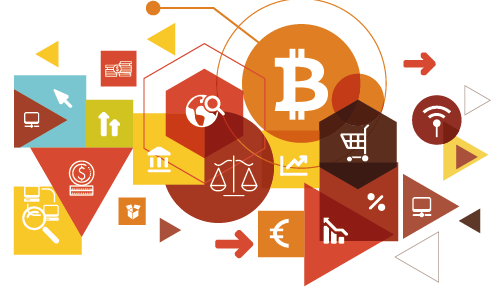To reach their full potential, Business School boards and executive teams should follow a five-point action plan, conducting a review that is based on the seven levers of effective boards, writes Sabine Dembkowski
Regulatory pressures, investor demands, innovative competitors and the array of internal and external disruptors challenge the traditional working styles of boards and top executive teams. The social and traditional media is better equipped than ever before to expose the failures and shortcomings of any business board.
In fact, a 2016 study by London Business School’s Leadership Institute concluded that ‘there are some pockets of good practice in the boardroom but, largely, boards have some way to go to reach their fullest potential’.
Another recent study, cited in an article for Harvard Business Review by McKinsey’s Global Managing Director, Dominic Barton, and Mark Wiseman, President and CEO of Canada’s largest pension fund, found that a mere 22% of directors believe their boards are ‘completely aware’ of how their firms create value. Only a sobering 16% claimed that their boards have a strong understanding of the dynamics of their firms’ industries.
These findings are in line with what we, as board advisers, see almost every day in our assignments and interactions with boards.
Clearly all the tick-box exercises created around governance, and the reports about good practice, have had little positive impact. It is surprising that pension funds and investors have not rung the alarm bells and demanded systematic development programmes for every board and top executive team.
The new normal
The context within which boards and top executive teams have to operate has changed. Board members are faced with enormous complexities, competing priorities and pressures. Simple one-dimensional mechanisms and responses do not do justice to the new-normal environment. It is easier to describe what an effective board and executive team looks like than to follow the path to get there.
Academics, governance experts and business consultants are quick to state that an effective board and top executive team needs to be flexible, high-performing and outward focused, and a fresh term for a governance theory is emerging in the academic literature: engagement theory (see box).
According to Naomi Chambers, Professor of Healthcare Management at Manchester Business School, University of Manchester, the emerging proposition is that boards need to embody a culture of high trust across the executive and non-executive divide, together with robust challenge and a tight grip on delivering results.
Since a one-size-fits-all blueprint for an effective board does not exist, any spreading of ‘best practice’ and box-ticking exercises can only be part of the answer.
For the creation of effective boards, plus executive teams that thrive in the ‘new-normal environment’, there needs to be a system that, on the one hand provides an evidence-based approach to ensure that boards are clear about levers that are known to make a board more effective, but also has the ability to unlock the potential of each individual, as well as the collective.
This system should combine a digital solution with fine human interaction, since time-consuming interview processes will hardly enthuse board members.
Five-point action plan for boards
The following five points form a framework for developing an effective board strategy:
1.Ensure that any board audit / board development is an integral part of the value-creation process. Anyone engaged in conducting a board audit and/or board development programmes must have an in-depth understanding of the value-creation plan of the organisation and integrate the insight into the audit / programme.
2.Provide for an evidence-based approach. A lot of data can be collected but it is only useful if it is the right data. In our analysis, we found that more often than not, board audits touch on issues/themes where there is no evidence whatsoever that could have an impact on effectiveness and value creation.
3.Ensure you provide management with real data. The members of executive boards are achievers and clever people in their own right. They want to succeed and develop, look good and develop their own careers. In our experience, they do engage if they see real hard data that provides them with genuine insight that is really relevant to their role.
4.Provide the management with a safe, neutral and confidential environment to reflect on the data collected and explore which actions would help them to strengthen their own position and that of the collective board, in relation to the value creation plan.
5. Establish a mechanism so that data can be collected on a continuous basis and the executive board can monitor progress.
Once you have ensured that this action plan is in place you need to identify the crucial levers of effective boards. Standard assessments of leadership competencies and psychometric tests may provide some useful insights, but all are insufficient for the creation of more effective boards and executive teams, and for understanding how you can have a greater impact in the boardroom and leave a positive legacy.
Our research shows that there are seven levers you can pull to create more effective boards and executive teams.

1. The composition of the board
It is crucial to understand how different areas of expertise and preferred role behaviours in a group setting complement each other and fit into the development cycle of the organisation, the strategic challenges of the organisation and the value creation plan.
2. The ability of the board to use the strength of its members
It is important that the individual members of the executive board understand their own strengths, how they are perceived, the collective strengths of the group and how all can be leveraged to implement and execute the value creation plan.
3. Clarity about roles and responsibilities
Ill-defined roles and grey areas of responsibility are the norm rather than the exception. Clarity and transparency of roles and responsibilities need to be in place.
4. Joint vision
A clear and common vision and orientation is pivotal. Transparency at the outset is vital.
5. Ability to resolve conflicts between the board and management
Effective executive boards and their members understand how to resolve conflicts between the board and the next management level.
6. The structure and organisation of the board’s work
The organisation of the executive board’s work depends critically on the board secretaries and the interplay of the chairman and CEO. Effective boards understand how to organise and structure their work.
7. Regular reviews and reflections about the board’s work
Regular time-outs, where board members can connect, leave the daily work behind and reflect on their work are crucial to success.
To conclude, if you are an executive who would like to make a mark and leave a strong positive legacy, you are well advised to follow the outlined five-point action plan, conducting a board and top executive team review that is based on the seven levers of effective boards. If you wish to establish a process for continuous improvement, apply the same audit questions and remember the real value does not lie in the data alone but the interaction with the data.
Dr Sabine Dembkowski is a Partner at Better Boards Limited.
Sabine is a management consultant and top executive coach working for and with DAX/FTSE10-listed companies, global corporate groups, private equity firms, leading consulting firms and mid-sized German businesses.
After studying business management in Cologne and completing a PhD in Bristol, Sabine worked as a management consultant in various leadership positions for AT Kearney and Monitor Company in London. Driven by a passion to get down to the ‘nuts and bolts’ and create real, long-lasting change in organisations, she set up two businesses: The Coaching Centre and Better Boards.
Further reading
Petersen, R. and Rollings, V. (2016): “Beyond Governance – How boards are changing in a diverse, digital world”, Leadership Institute, London Business School.
Barton, D. and Wiseman, M. (2015): “Where boards fall short”, Harvard Business Review, January – February.
Chambers, N. (2012): “Viewpoint – healthcare board governance”, Journal of Health Organisation and Management”, Vol. 26, No. 1, pp. 6-14.













































